Who is SÄBU?
Through the development of innovative products, product enhancements, investments in production halls and modern machinery as well as the willingness to change in the market, the former Sägewerk Buchen (Buchen sawmill) has developed into a modern industrial company.
Today, with around 250 employees at two production sites (Morsbach/NRW and Gransee/Brandenburg), we manufacture modular space in its full range and diversity.
Today, with around 250 employees at two production sites (Morsbach/NRW and Gransee/Brandenburg), we manufacture modular space in its full range and diversity.
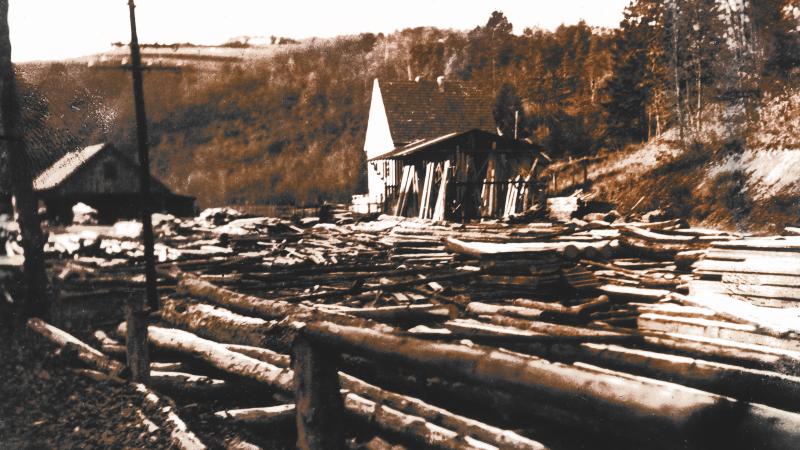
1924
The "Buchen sawmill" is founded by Jakob Buchen.
The name SÄBU is derived from the two initial letters of the name "Sägewerk Buchen".
The name SÄBU is derived from the two initial letters of the name "Sägewerk Buchen".
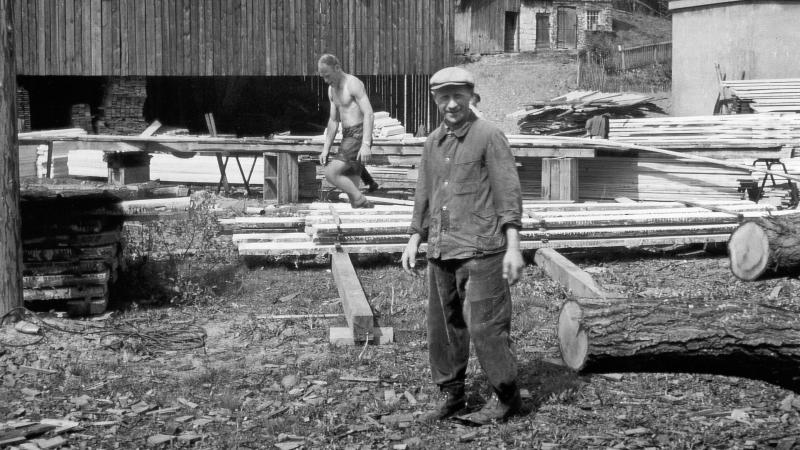
1924
In addition to the classic activities of a sawmill, benches, food troughs as well as wooden booths were manufactured.
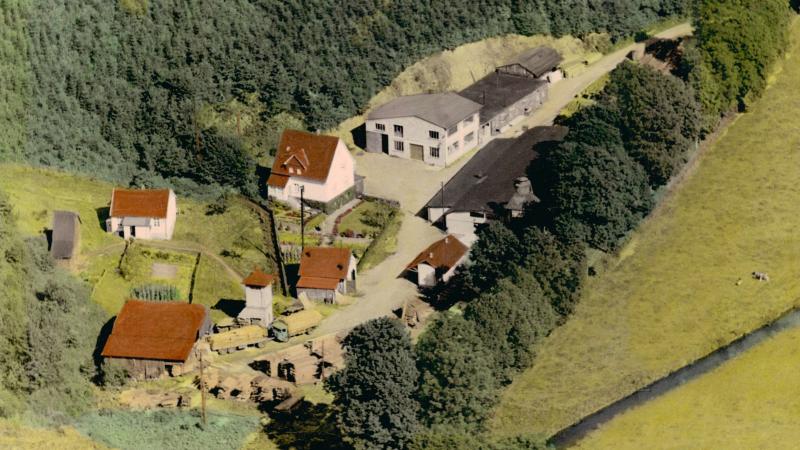
1925 - 1949
The first two production halls are built in the early and mid-1940s. In 1946 SÄBU produces packaging boxes for high-quality industrial goods, which are sent all over the world. In the hard years of the post-war period, the continuous development from a sawmill to a modern industrial company begins.
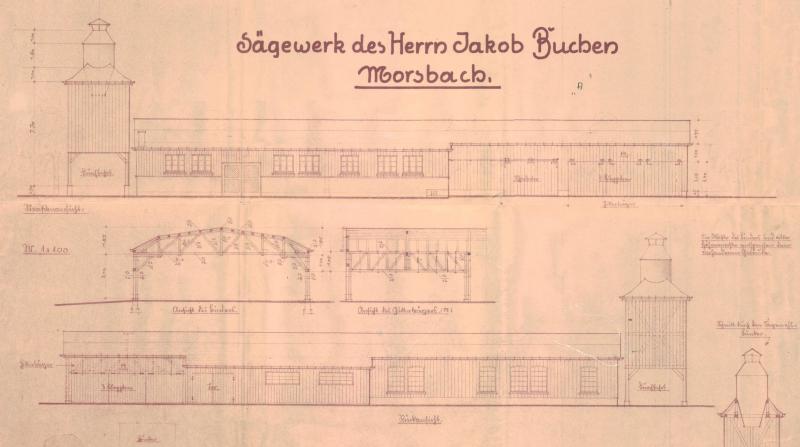
1925 - 1949
A modern sawmill is built in 1940.
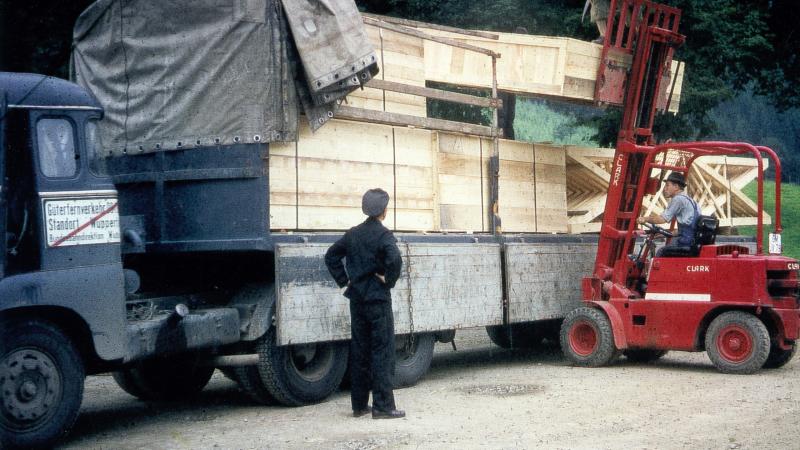
1946
Packing crates are loaded.
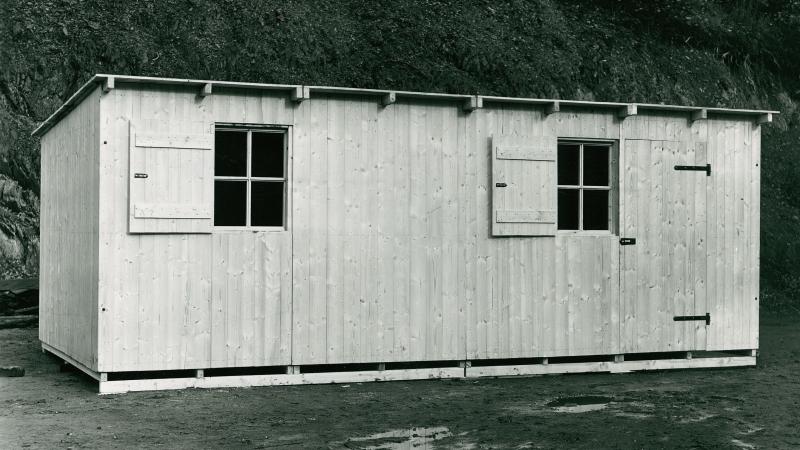
1946
Building barrack
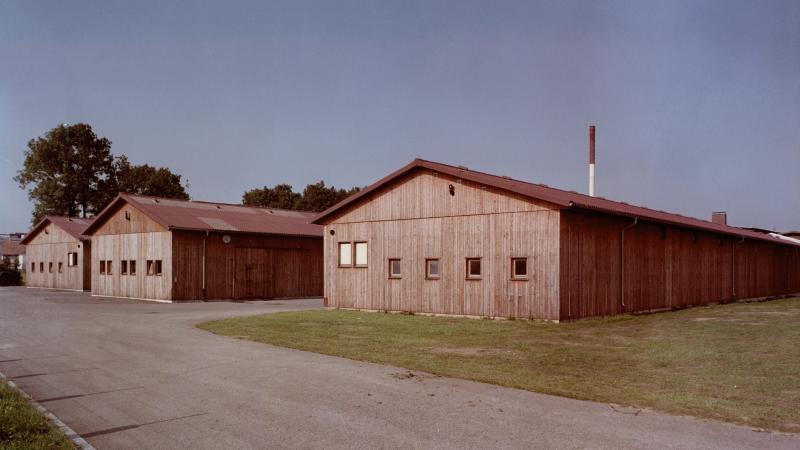
1950 - 1957
In 1955, the production of prefabricated timber buildings in small panel construction started. The construction of accommodation buildings for foreign workers and the construction of building huts for building sites in an economically emerging country provide full order books for SÄBU.
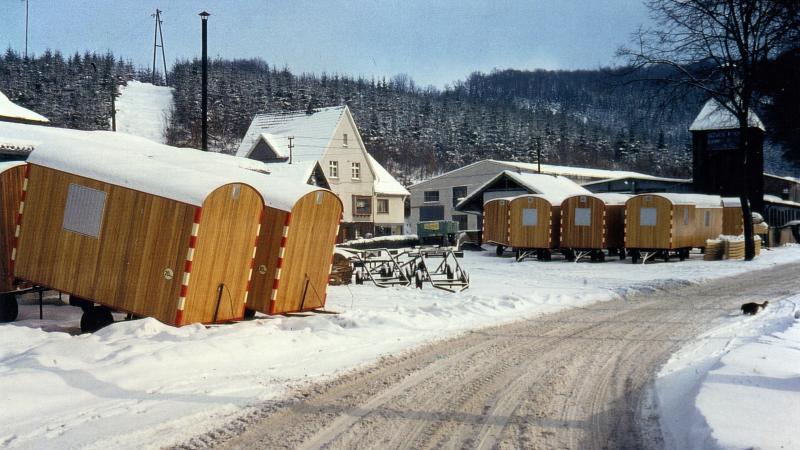
1958 - 1959
In 1958, the product range is expanded to include another product, the original SÄBU wooden construction trailer.
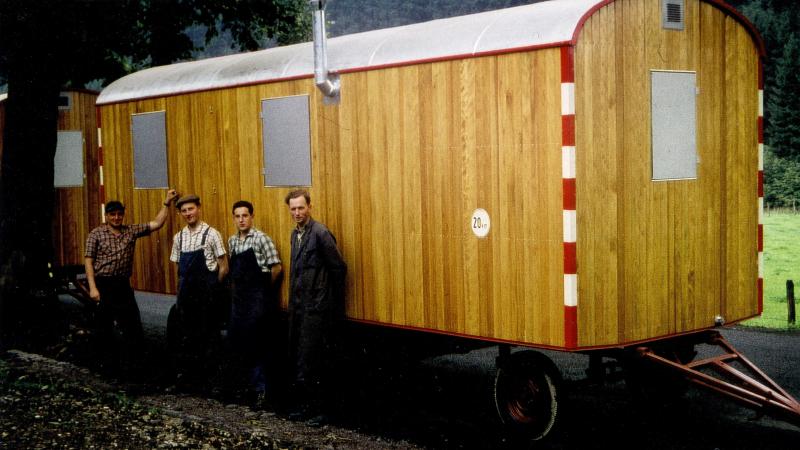
1958 - 1959
Employees in front of the original SÄBU wooden construction trailer.
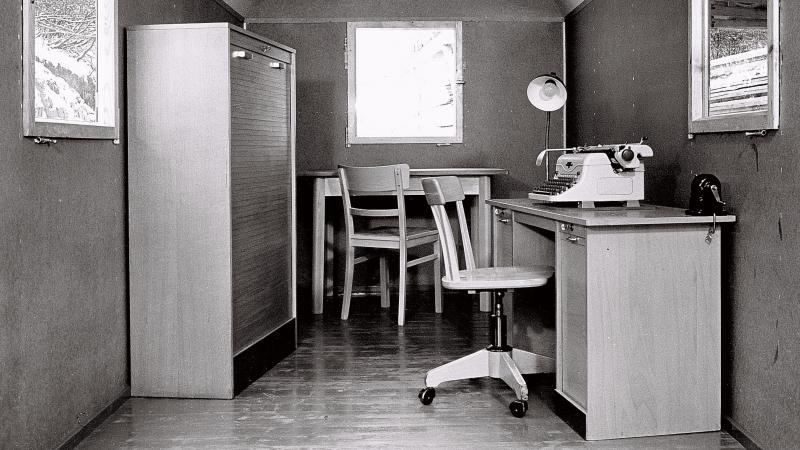
1958 - 1959
Interior design for an office in the original SÄBU construction trailer.
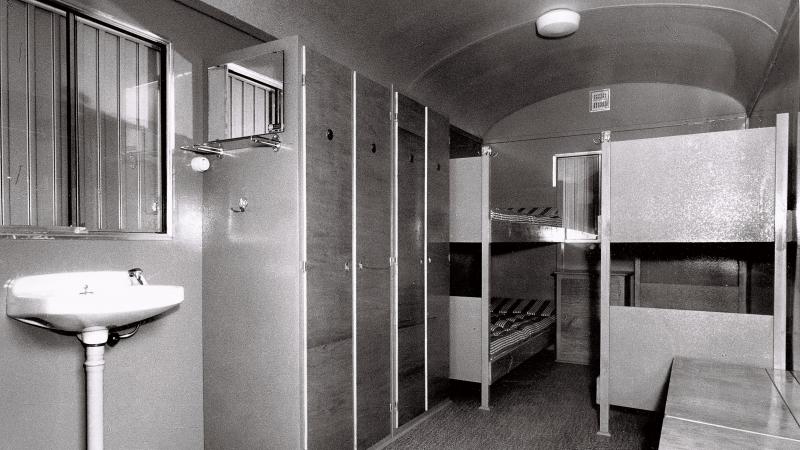
1958 - 1959
Interior design of an original SÄBU construction trailer with sleeping accommodation.
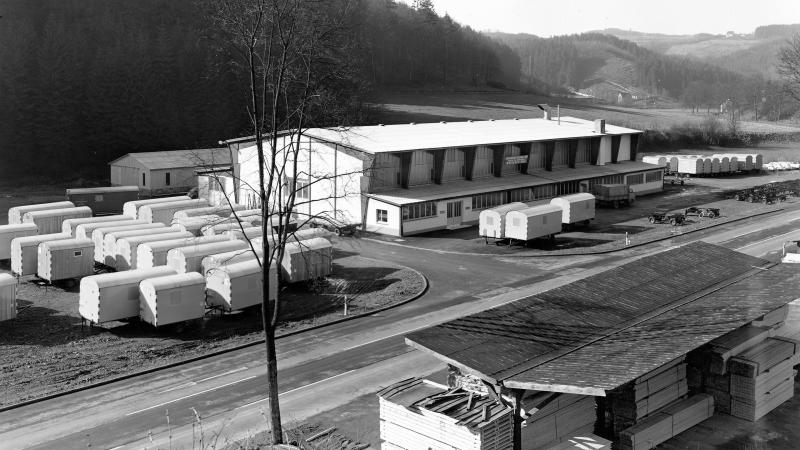
1960 - 1969
The 60s are marked by the industrial development. The enormous demand for the original SÄBU construction trailer makes it necessary to expand capacity. A further production facility with the most modern paint booth is built. Over the years, the construction trailer with wooden body matures to the construction trailer in steel skeleton construction.
1964 SÄBU founds another factory for the production of prefabricated wooden buildings, located in Ebenhofen in the Allgäu, which operates indepently since the end of 1969.
1964 SÄBU founds another factory for the production of prefabricated wooden buildings, located in Ebenhofen in the Allgäu, which operates indepently since the end of 1969.
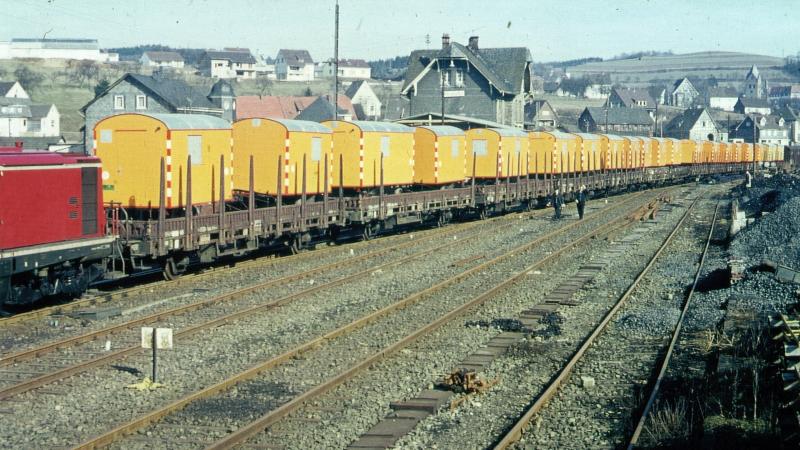
1960 - 1969
The construction vehicles were mainly loaded at Morsbach railway station.
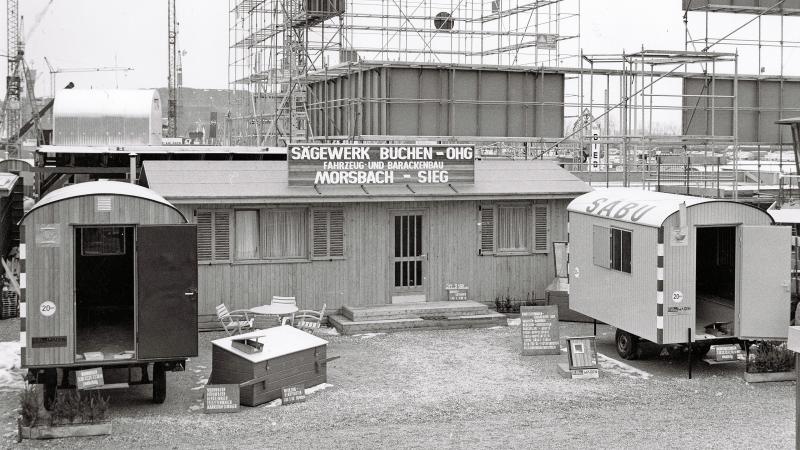
1960 - 1969
In 1964, SÄBU presents its product portfolio at the "bauma" trade fair in Munich.
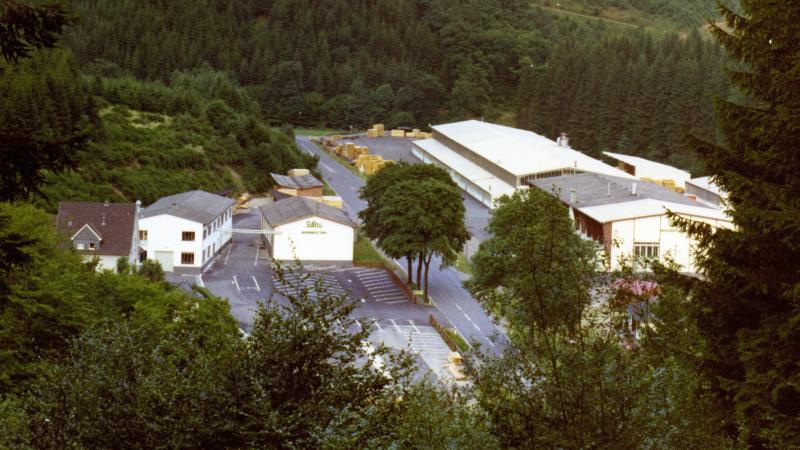
1970 - 1977
In 1971 a new production hall is built in which the ISO container, the room container, of SÄBU is manufactured from 1972. The production of stackable and combinable room elements for building sites and accommodation became real competition for the site trailer and the wooden barrack.
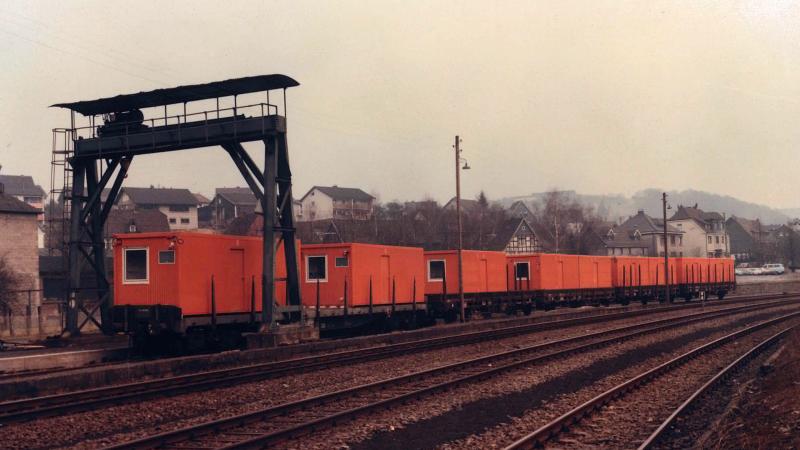
1970 - 1977
The SÄBU room containers leave the factory and are loaded at Morsbach railway station.
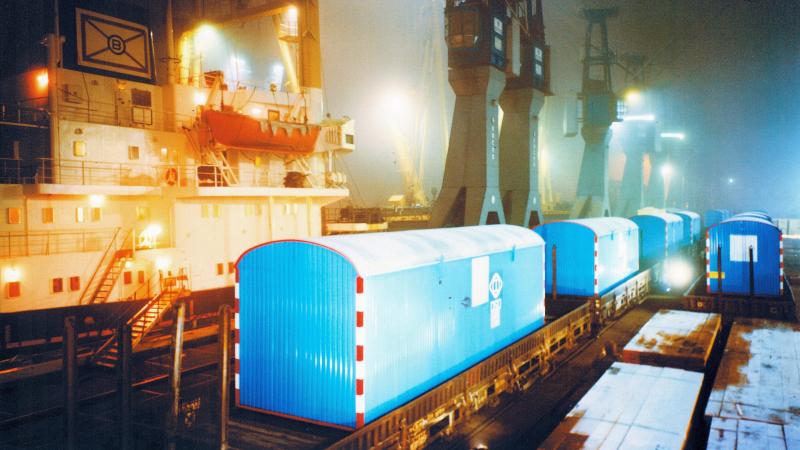
1970 - 1977
In 1974, SÄBU construction trailers in steel skeleton construction are shipped overseas in the port of Hamburg.
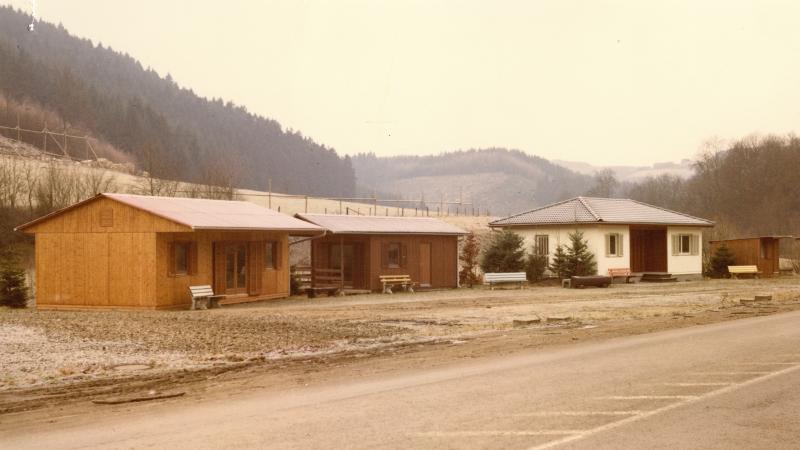
1970 - 1977
SÄBU manufactures holiday, weekend and residential houses in timber construction and displays them in a small exhibition on the factory premises.
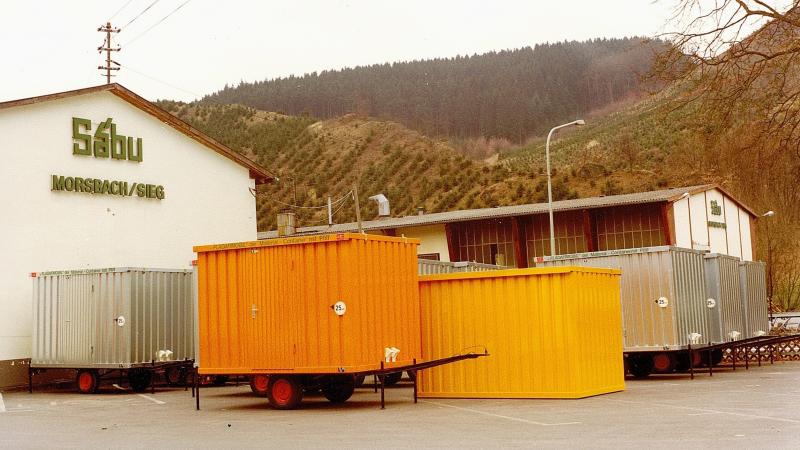
1978 - 1980
In the mid-1970s, company owner Willy Klein develops the first dismountable fully galvanised material container on the European market. Up to this time the so-called material huts available were always screwed down tightly.
In 1978 the serial production starts and from now on the FLADAFI material container sets new standards in material storage. No construction site can be imagined without the craneable material container, quality and accessories are unbeatable.
In 1980 SÄBU builds another production hall and expands the range of FLADAFI products by a multitude of different FLADAFI material container types. The demand at home and abroad ensures continuous growth of the company.
In 1978 the serial production starts and from now on the FLADAFI material container sets new standards in material storage. No construction site can be imagined without the craneable material container, quality and accessories are unbeatable.
In 1980 SÄBU builds another production hall and expands the range of FLADAFI products by a multitude of different FLADAFI material container types. The demand at home and abroad ensures continuous growth of the company.
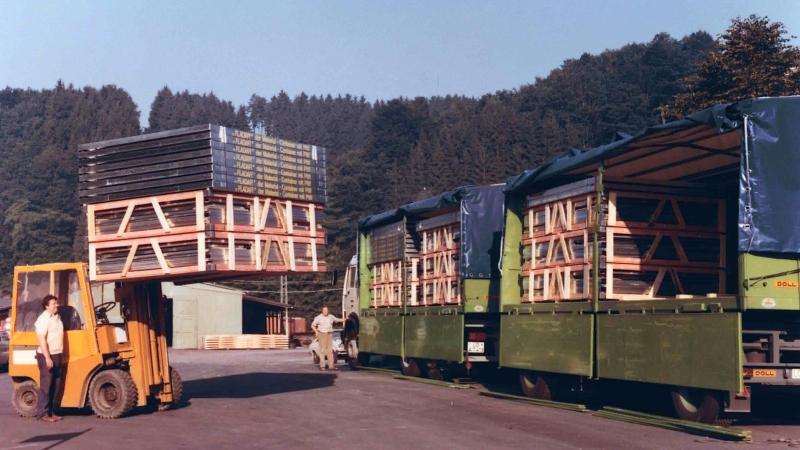
1978 - 1980
24 dismantled material containers are loaded.
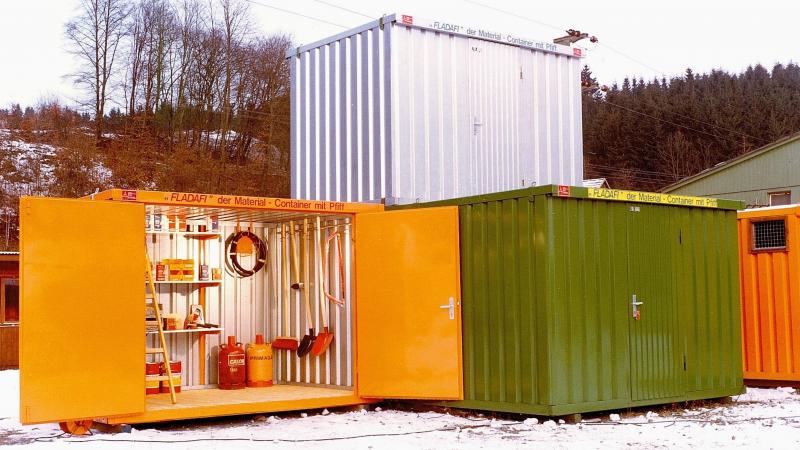
1978 - 1980
"FLADAFI" the material container with a difference.
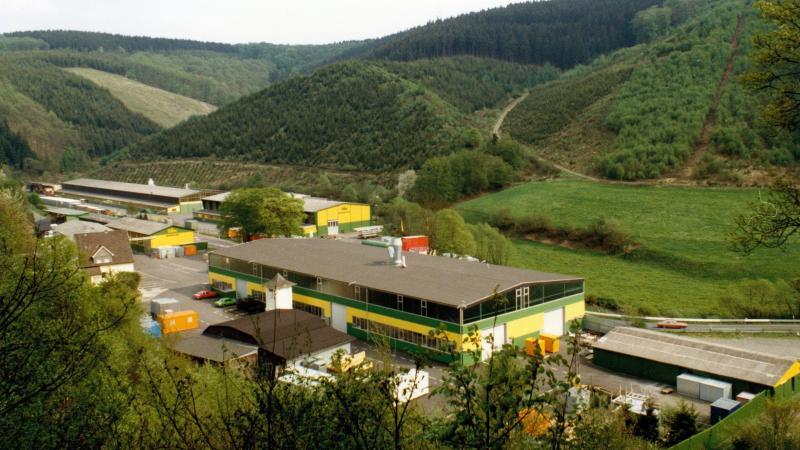
1981 - 1985
The new production hall is completed in 1981, where a large number of new container types from the FLADAFI® range are manufactured.
The craneable material container is patented in 1981. DBP 2853251. FLADAFI®. Thanks to the unique plug-in connection of the material containers, the FLADAFI® can be assembled by just two people in a few minutes, without special tools.
The craneable material container is patented in 1981. DBP 2853251. FLADAFI®. Thanks to the unique plug-in connection of the material containers, the FLADAFI® can be assembled by just two people in a few minutes, without special tools.
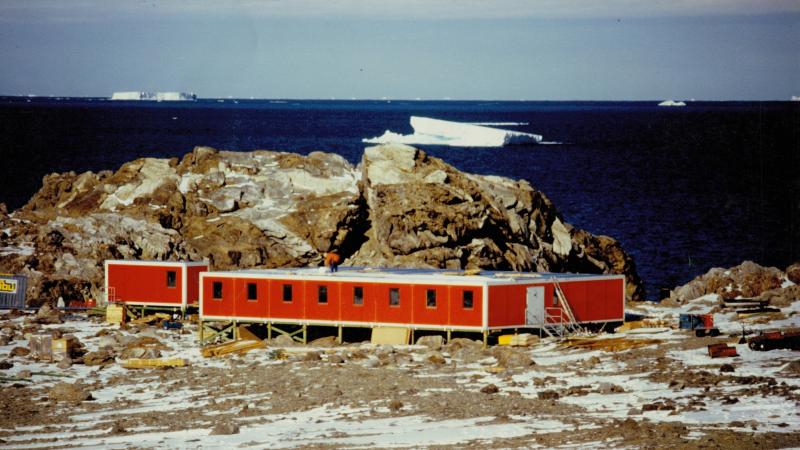
1983
In 1983 SÄBU built the German research station Gondwana, in the Antarctic, from space containers. Scientists there carry out geological investigations in the trans-Arctic mountains.
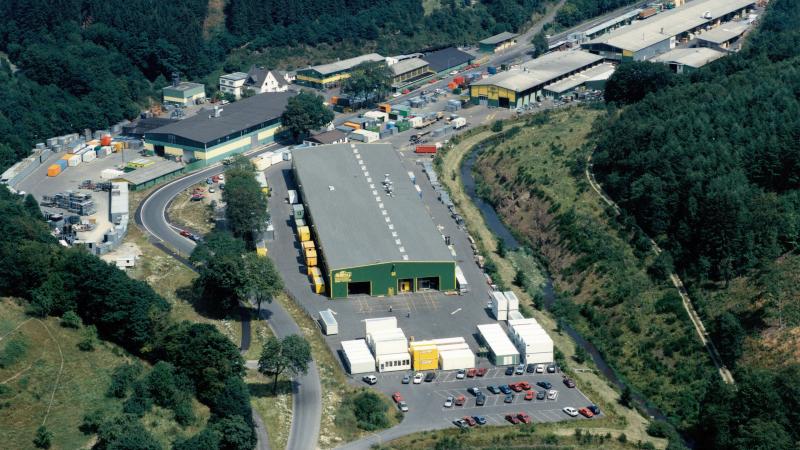
1986 - 1989
Not only does the FLADAFI® set new standards, also the room container gains in importance. Container combinations as well as single- or multi-storage container buildings for permanent or temporary use, for example as office complexes, are in demand.
For this reason, the largest production hall was built in 1986 to accommodate the progress in container construction. In the field of prefabricated timber construction, SÄBU produces office buildings, schools and kindergartens.
In 1987, the new SAFE brand was founded.
For this reason, the largest production hall was built in 1986 to accommodate the progress in container construction. In the field of prefabricated timber construction, SÄBU produces office buildings, schools and kindergartens.
In 1987, the new SAFE brand was founded.
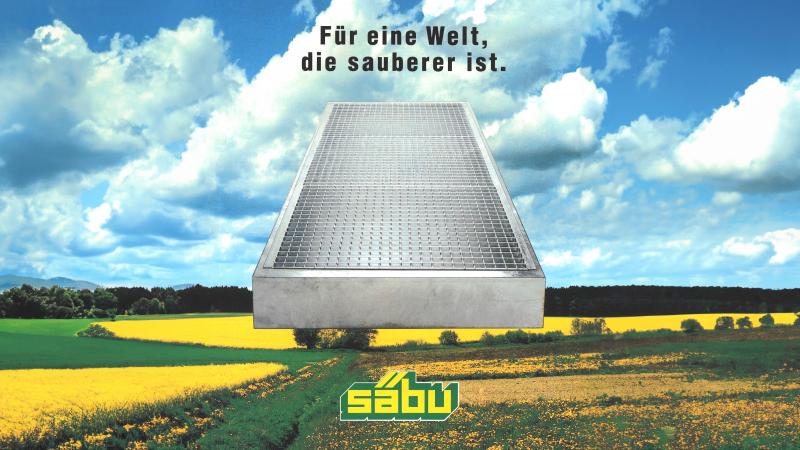
1987
Production of the new SAFE brand starts with the SAFETANK 1000 and the smaller SAFETANK 300. SAFE stands for safety in handling hazardous substances for people and the environment.
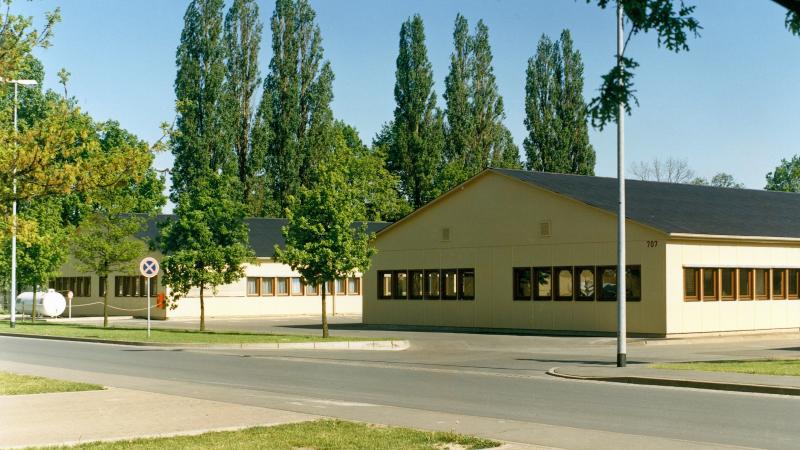
1986 - 1989
Production halls in prefabricated timber construction.
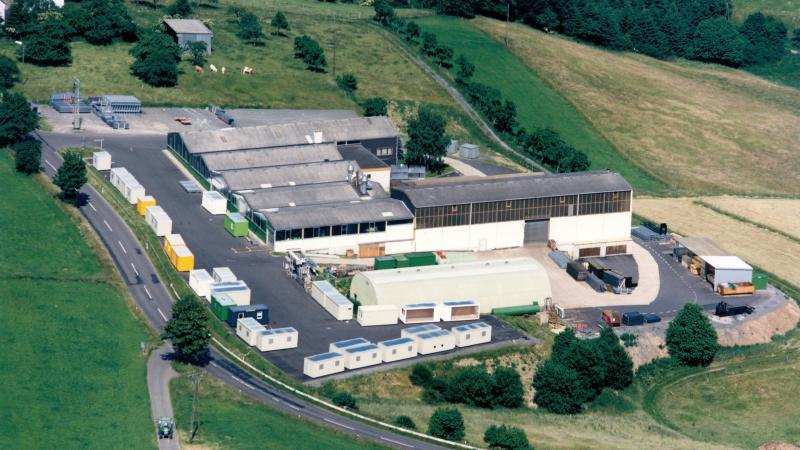
1990
The time after the reunification of West and East Germany. A production facility in Erblingen near Morsbach is acquired to meet the increasing demand for quickly available space.
The company Optirent Mobilraum-Mietservice GmbH is founded.
From now on, this new company ensures the provision of mobile space for customers who do not want to buy space containers but only rent them, for a limited period of time in industry, trade and municipalities. The business segment "temporary space" is launched.
The company Optirent Mobilraum-Mietservice GmbH is founded.
From now on, this new company ensures the provision of mobile space for customers who do not want to buy space containers but only rent them, for a limited period of time in industry, trade and municipalities. The business segment "temporary space" is launched.
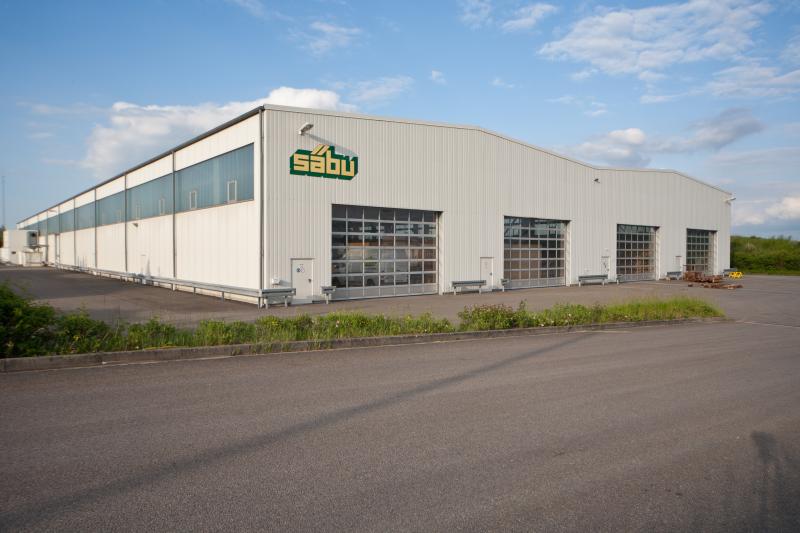
1991 - 1993
Due to the historical development in the Federal Republic of Germany, the company owners Willy Klein and Stefan Klein decide to establish a second factory in Brandenburg in 1991.
SÄBU Gransee Mobile Raumsysteme GmbH was founded.
SÄBU Gransee Mobile Raumsysteme GmbH was founded.
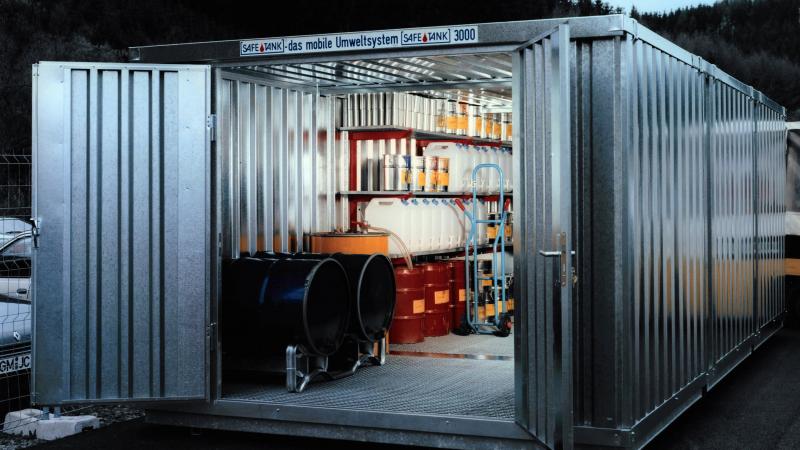
1994 - 2000
The SAFE brand product range is constantly expanding. SAEBU develops and produces containers with sump trays for the storage of substances hazardous to water and the environment.
SÄBU has been certified according to DIN EN ISO 9001 since 1997.
SÄBU has been certified according to DIN EN ISO 9001 since 1997.
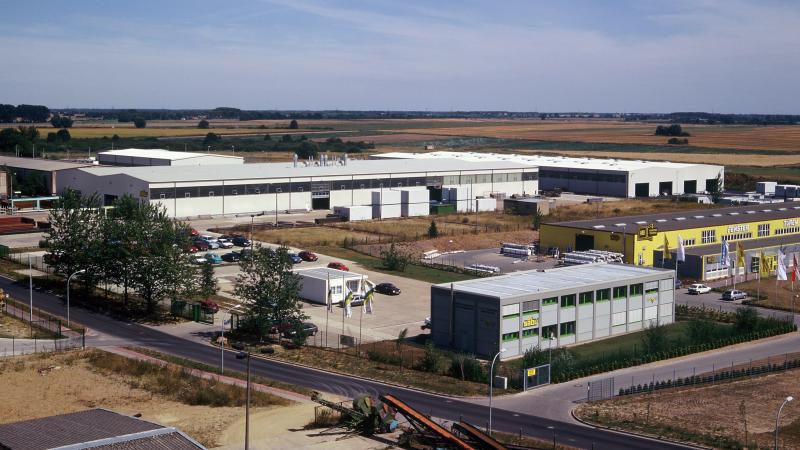
1994
SÄBU Gransee Mobile Raumsysteme GmbH completes the manufacturing programme in the field of prefabricated building in 1994 with the construction of a large new manufacturing hall for the production of prefabricated wooden buildings.
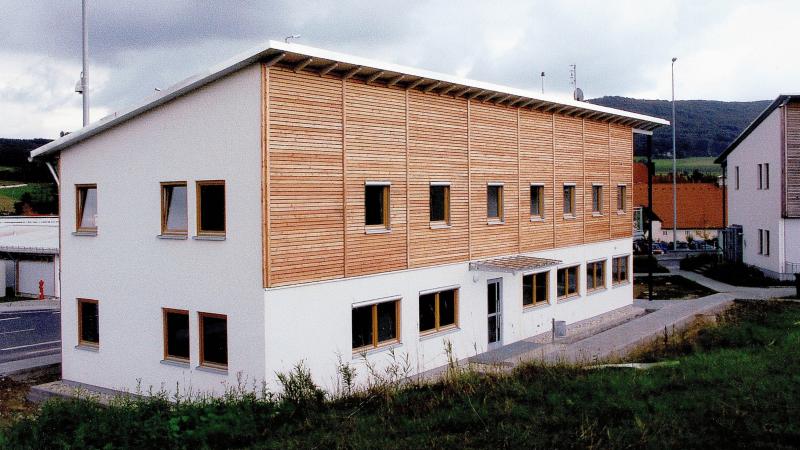
1994 - 2000
The system buildings of the 90s change their face. Nothing reminds anymore of the former container buildings, the traditional container. The multi-storey buildings get a new design, develop into modern buildings with all the requirements of building physics. Modular construction becomes an alternative to solid construction.
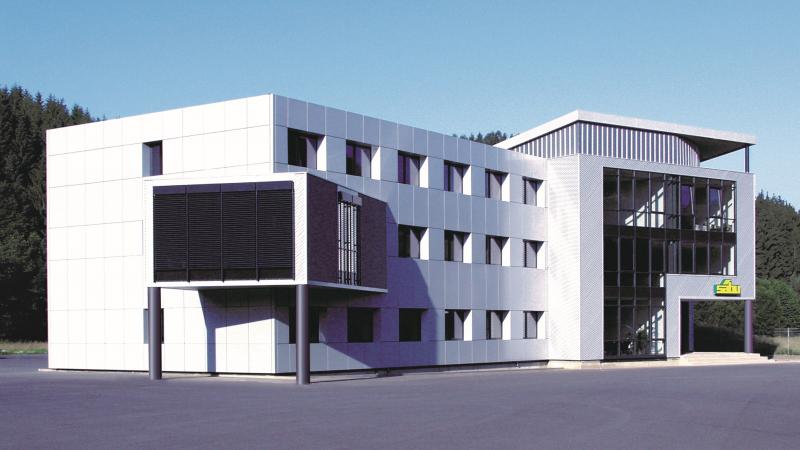
2001
The new SÄBU administration building in Morsbach is inaugurated in 2001. The modular building shows the variety of design possibilities offered by modern modular construction in the 20th century.
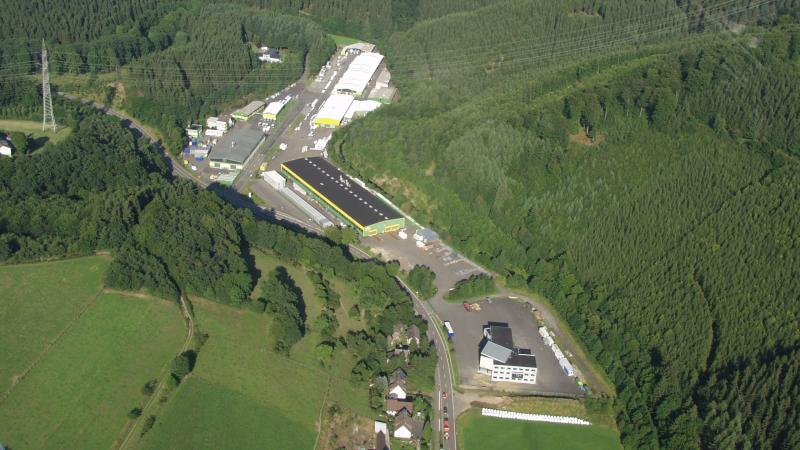
2001
Aerial view of the SÄBU company premises.
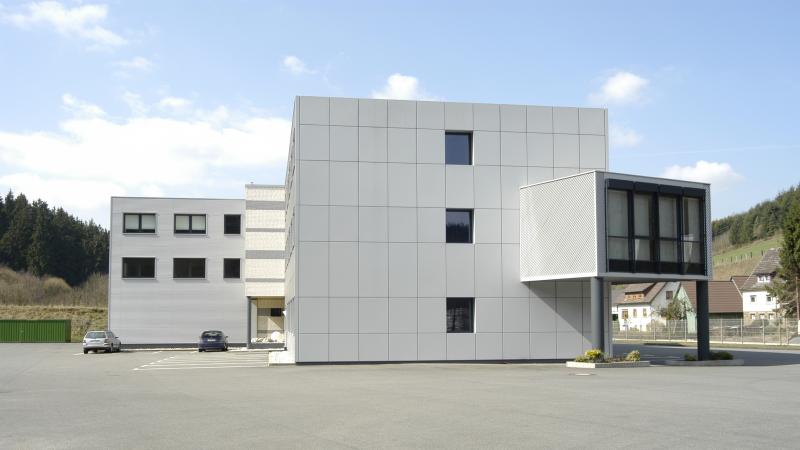
2001
The new administration building shows the different possibilities of façade design.
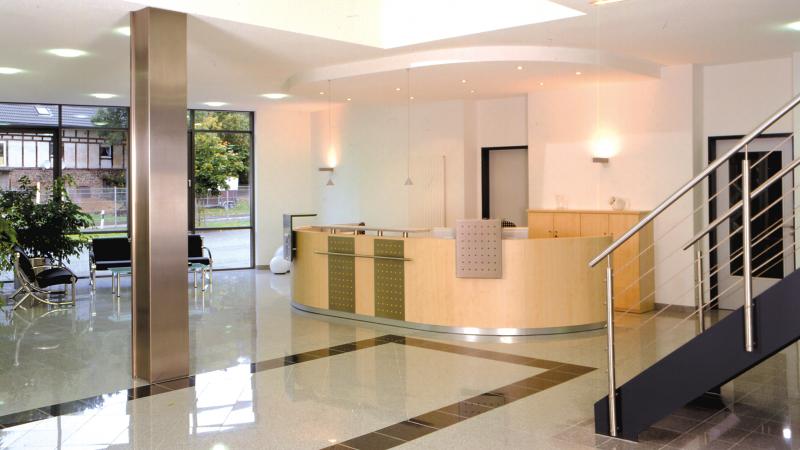
2001
We welcome our guests in the entrance.
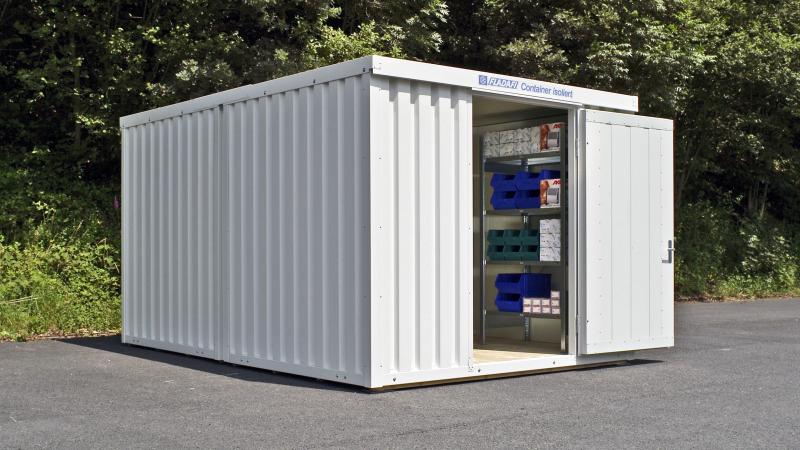
2002 - 2011
The FLADAFI® material containers and the SAFE storage containers have been available in insulated design since 2002. From now on, temperature and humidity-sensitive materials can be stored under perfect conditions.
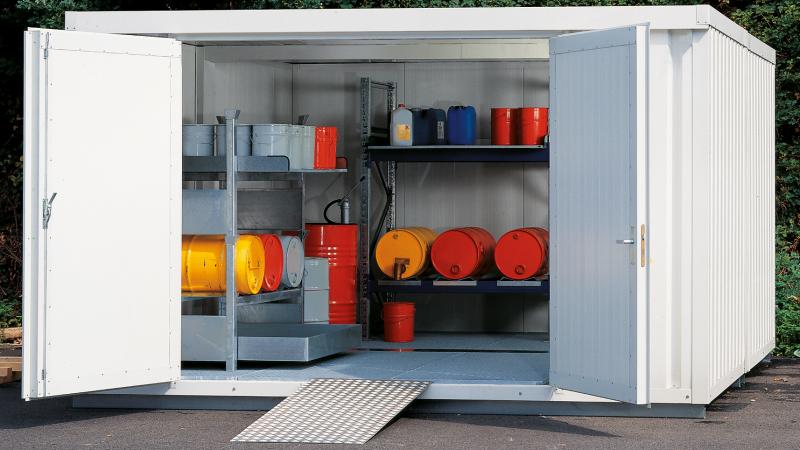
2002 - 2011
The insulated SAFE tank STI 4000 in the standard colour RAL 9002 (grey-white) with drive-over bridge for the storage of water-polluting and/or flammable materials in accordance with regulations.
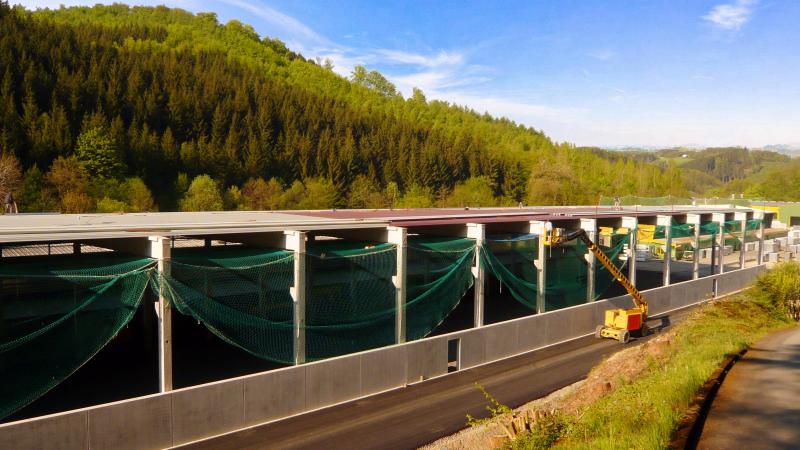
2002 - 2011
The old office building is demolished in 2008, a piece of history has to make way for the development of the company, urgently needed storage space is created. At the same time, a new production hall is built for the manufacture of material containers and hazardous material containers.
SÄBU has been prequalified since 2008 and entered in the list of prequalified construction companies.
SÄBU has been prequalified since 2008 and entered in the list of prequalified construction companies.
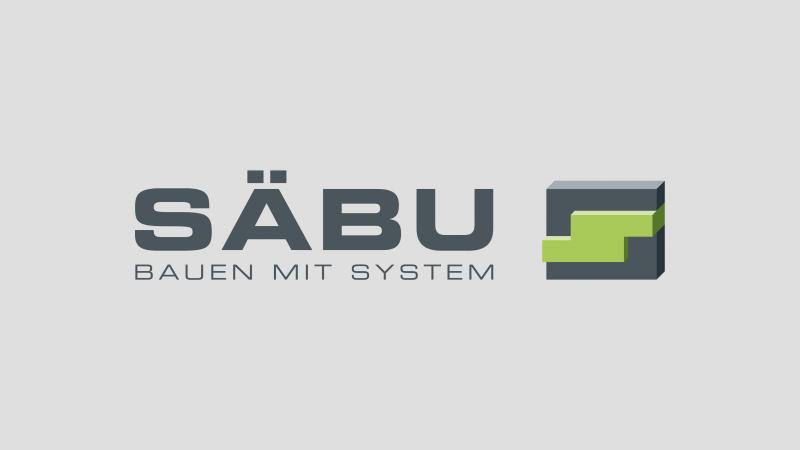
2011 - 2012
At the end of 2011, SÄBU decides on a new corporate design and presents itself with a new modern image in 2012.
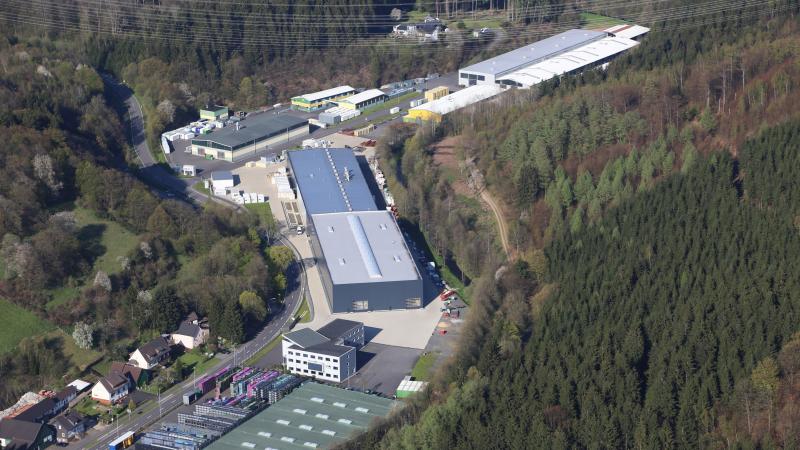
2013 - 2015
In 2014, we have been building with system for 90 years. And the company continues to grow. The largest hall expansion of modular construction production to date by 4,700 m² starts at the Morsbach site.
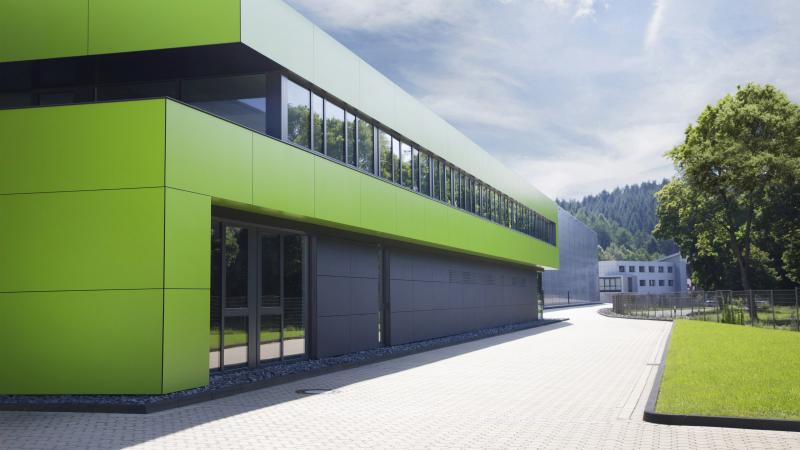
2016 - 2018
The new technology centre was built in 2016 adjacent to the new production hall. The technology building houses the design and work preparation in direct communication with the production division.
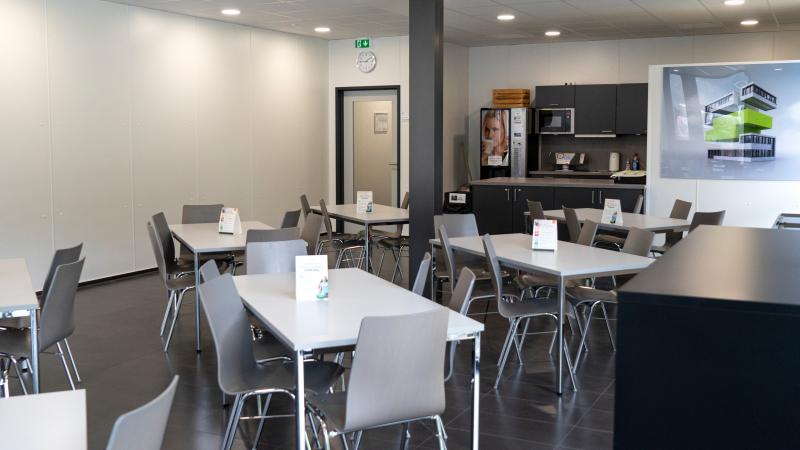
2016 - 2018
The new office building adjacent to the production hall houses, among other things, the employee canteen.
2016 - 2018
The company Optirent Mobilraum-Mietservice moves into a new location in Bergneustadt in March 2017. The entire new building was planned, supervised and executed by SÄBU Morsbach. The modern three-storey office building illustrates the quality of SÄBU modular construction in the 20th century.
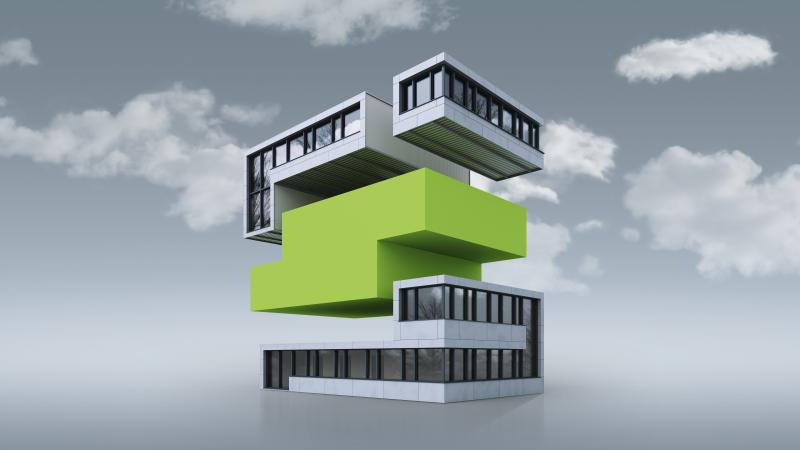
2019
The SÄBU company presents itself with a new homepage, looks back on a company history of almost 100 years and relies on the strengths of a family business that is already in its third generation.
SÄBU: a company with tradition - innovation - visions
SÄBU: a company with tradition - innovation - visions
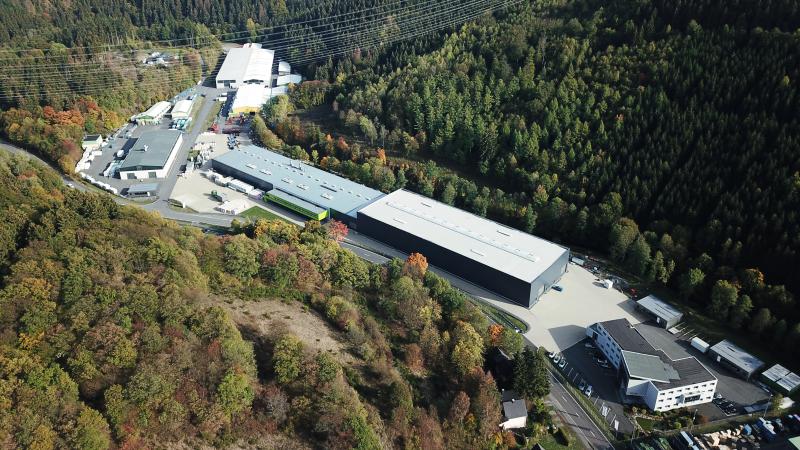
2024
2024 feiern wir ein Jubiläum - 100 Jahre industrielle Entwicklung am Standort Morsbach. Als Sägewerk Buchen gegründet, entstand im Laufe der Zeit das Unternehmen SÄBU. Auch das Produktionsprogramm hat sich in den Jahrzehnten verändert und weiterentwickelt.
Diesen Anlass möchten wir nutzen, um das zu tun, was SÄBU schon immer ausgezeichnet hat: Wir schauen nach vorne!
Diesen Anlass möchten wir nutzen, um das zu tun, was SÄBU schon immer ausgezeichnet hat: Wir schauen nach vorne!